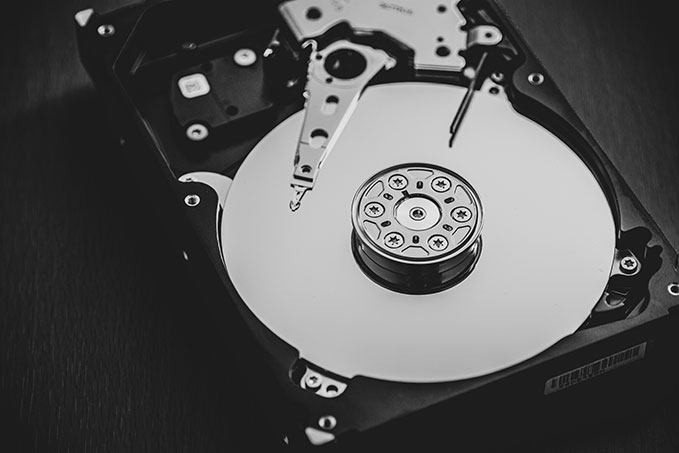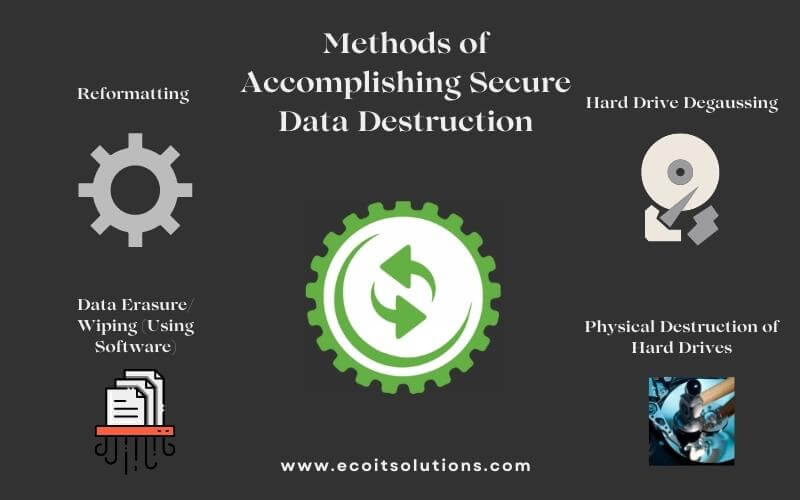How to Integrate Data Destruction Techniques right into Your Cyber Security Strategy
How to Integrate Data Destruction Techniques right into Your Cyber Security Strategy
Blog Article
Exactly How Correct Information Destruction Contributes to Robust Computer System Protection Providers and Mitigates Dangers of Data Violations
In today's electronic landscape, the value of correct information destruction can not be overemphasized, as it offers as a fundamental part of thorough computer protection solutions. By carrying out efficient data erasure methods, organizations not just secure sensitive details from unapproved accessibility however also boost their compliance with governing frameworks - data destruction. The ramifications of inadequate data devastation extend past simple conformity; they can profoundly impact a company's cybersecurity pose and reputation. Comprehending these measurements raises essential inquiries about the practices in location and their effectiveness in an era of rising cyber dangers.
Significance of Information Destruction
In today's electronic landscape, the relevance of information destruction can not be overstated. As companies increasingly count on electronic possessions, the potential dangers related to information breaches and unauthorized accessibility magnify. Effective information devastation is an important part of a detailed info safety method, protecting delicate info from falling into the hands of malicious stars.
When data is no more required, merely erasing documents or formatting hard disks is not enough. Residual information can typically be recouped making use of conveniently offered devices, presenting substantial risks to both companies and individuals. This underscores the need for robust information damage practices that make certain all data is irretrievably eliminated.
Moreover, regulative compliance mandates, such as GDPR and HIPAA, emphasize the obligation to secure sensitive information, including its correct disposal. Non-compliance can cause serious legal effects and punitive damages. data destruction. Therefore, integrating effective information destruction protocols not only improves safety but additionally fortifies a company's online reputation and dependability

Methods of Secure Data Erasure
Several reliable methods of safe and secure data erasure can be employed to ensure that delicate details is permanently eliminated from storage tools. One commonly acknowledged technique is data overwriting, which includes replacing existing data with random patterns several times. This approach substantially lowers the possibilities of information recovery, although it may not work against sophisticated forensic techniques.

Physical devastation is also a reputable strategy, where storage gadgets are rendered pointless via shredding, crushing, or incineration. This technique makes sure that information can not be recouped by any kind of ways however requires cautious handling of hazardous products.
Lastly, specialized software devices designed for safe and secure information erasure offer capabilities that follow different erasure criteria. These tools often include features like verification processes to confirm successful data damage.
Utilizing these methods in combination can improve data security and reduce the risks connected with data breaches, making certain that delicate information is not accidentally subjected.
Legal and Compliance Factors To Consider
The techniques employed for protected information erasure not only offer to safeguard delicate details yet also should line up with lawful and conformity structures controling data defense. Organizations are needed to comply with various laws, such as the General Information Security Policy (GDPR), the Medical Insurance Mobility and Liability Act (HIPAA), and the Repayment Card Sector Information Safety Criterion (PCI DSS) These laws mandate particular procedures for data dealing with and devastation, making certain that personal and delicate data is irretrievably gotten rid of when no more needed.
Failure to adhere to these legal requirements can cause considerable penalties, consisting of fines and reputational damage. Additionally, companies have to preserve records of information devastation procedures, demonstrating conformity during audits or investigations. This documentation not just secures versus legal repercussions yet additionally strengthens trust with stakeholders and clients, showcasing a dedication to data security.
Including legal and compliance considerations right into data devastation practices is necessary for any type of company. It lessens the threat of data violations and highlights an aggressive technique to guarding sensitive details, ultimately fostering a culture of safety and accountability throughout the organization.
Influence on Cybersecurity Position
Reliable information devastation significantly improves a company's cybersecurity pose by reducing the prospective assault surface for cyber hazards. When sensitive data is not effectively ruined, it continues to be obtainable to malicious stars who can manipulate this details for unapproved accessibility, identification burglary, or corporate espionage. By applying robust data destruction protocols, organizations can efficiently lessen the danger of information breaches and enhance their general security structure.
Additionally, the secure disposal of obsolete or unnecessary data not only safeguards delicate details yet likewise assists companies adhere to market guidelines and requirements. Failing to effectively damage information can lead to extreme lawful effects and reputational damages, additional endangering an organization's cybersecurity stance.

Eventually, prioritizing reliable information destruction is essential for fostering a durable cybersecurity position, ensuring that companies stay cautious against evolving cyber threats while securing their critical properties and stakeholders.
Best Practices for Organizations
Executing ideal methods for information damage is important for companies intending to guard sensitive details and alleviate cybersecurity threats. Organizations ought to develop a detailed information damage plan that outlines responsibilities and procedures. This plan should abide by appropriate regulations, such as GDPR or HIPAA, making certain legal best site consistency.
Secondly, it is important to use approved information sanitization methods, including data wiping, degaussing, and physical devastation, customized to the kind of information and storage tool. Employing qualified experts for information devastation solutions boosts the reliability of these approaches.
Moreover, companies must preserve a detailed inventory of all data storage space devices, ensuring that all out-of-date or replaced tools undertakes damage. Normal audits of data damage methods can assist determine weaknesses and boost conformity.
Employee training is another critical facet, as personnel must recognize the relevance of data damage and comply with established procedures. Ultimately, companies should document all data damage tasks to offer accountability and traceability, which can be invaluable during audits or in useful link case of a breach.
Conclusion

One commonly recognized approach is data overwriting, which involves replacing existing data with arbitrary patterns multiple times.The methods employed for safe data erasure not only offer to protect sensitive information but also has to straighten with legal and compliance frameworks regulating information defense. These policies mandate certain procedures for information taking care of and devastation, making certain that sensitive and personal data is irretrievably removed when no longer required.
By implementing durable information damage methods, companies can efficiently minimize the threat useful source of information breaches and improve their general safety and security framework.
In verdict, correct data damage is essential for improving computer system safety services and minimizing the dangers linked with data violations. - data destruction
Report this page